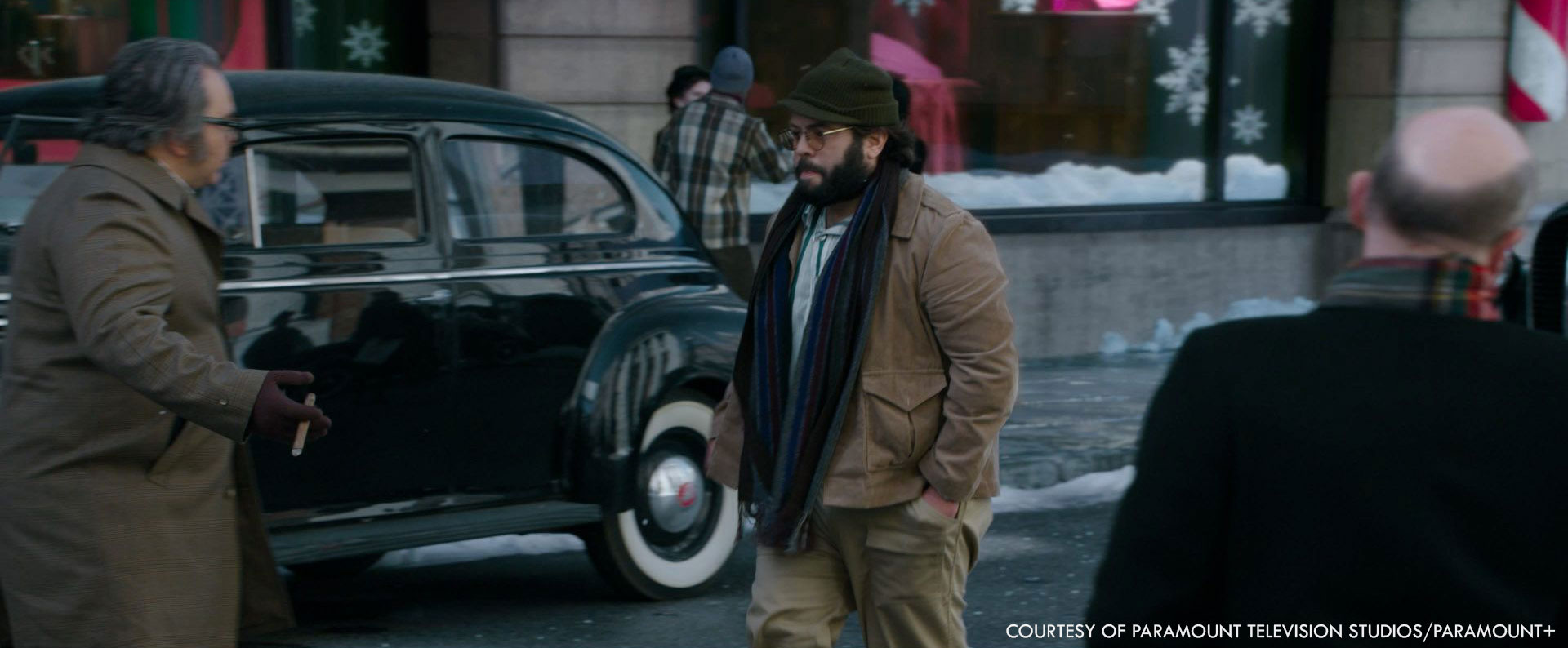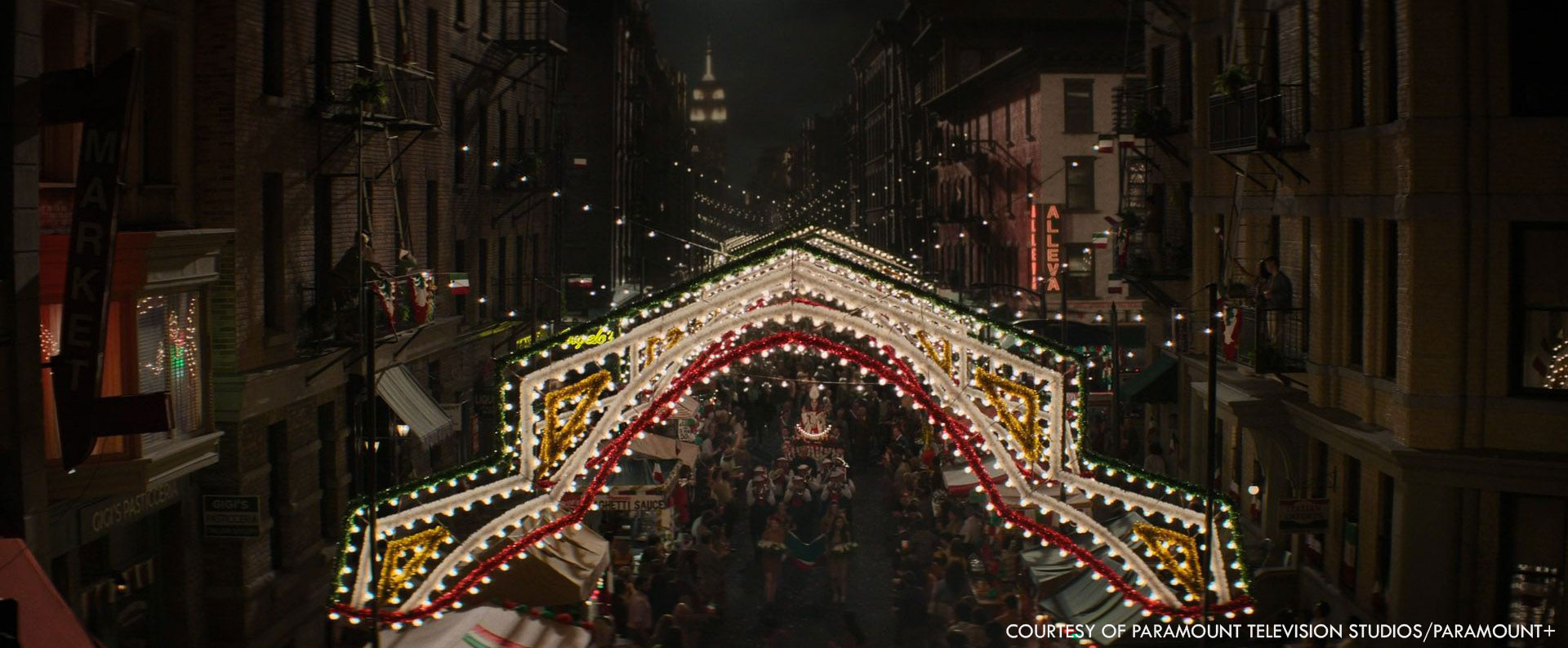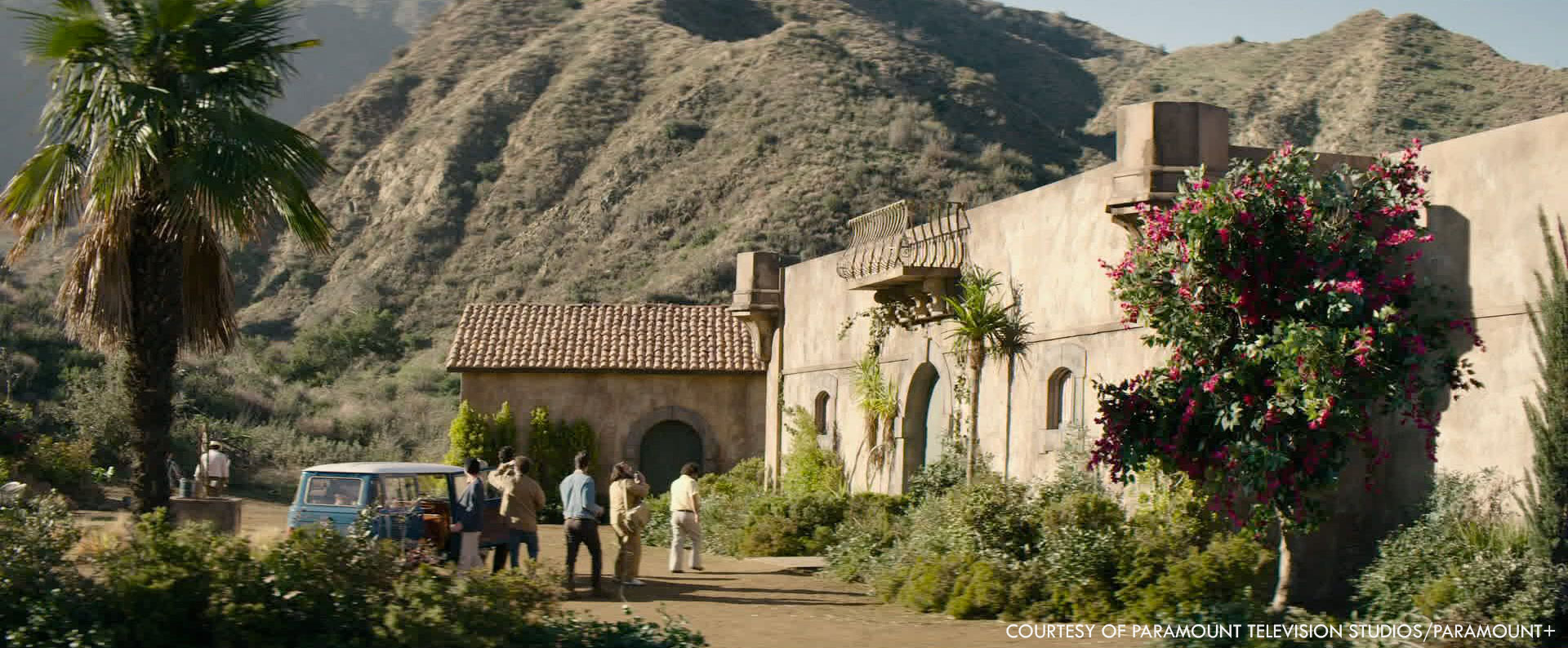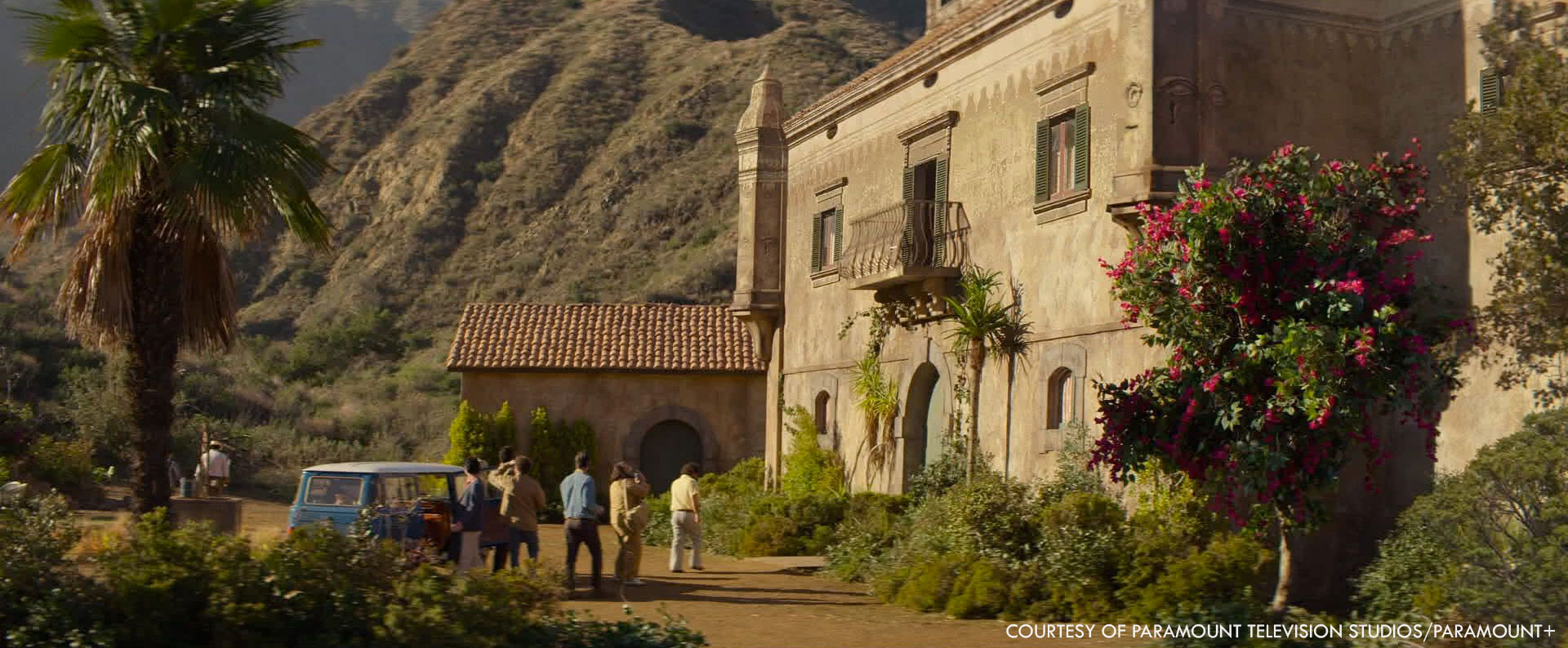John Mangia has been working in visual effects for 17 years. He has worked at many studios such as Brainstorm Digital, Sony Pictures Imageworks and The Mill before becoming a freelance VFX Supervisor. He has handled visual effects for shows like The Society, The Code and The Queen’s Gambit.
What is your background?
I started my career in 2005 as a compositor for top-tier VFX companies. I’ve since moved on as an independent VFX Supervisor and have been fortunate to work with some incredibly talented directors, producers and VFX artists across feature film and episodic tv.
How did you get involved on this series?
In typical fashion of The Godfather, I was made an offer I couldn’t refuse. I was introduced to one of the producers on the show and had a great early conversation with Production Designer Laurence Bennett. Collectively, we had a similar creative vision about how to approach the work in the show.
How was the collaboration with the showrunner and the directors?
Our showrunner Nikki Toscano and our creative EP Russell Rothberg were awesome to work with because they put a lot of faith and trust in the VFX team to create much of the world that the story takes place in while also honoring the original film. The directors, including Dexter Fletcher and Adam Arkin also brought great ideas for the visual language of the show.
What was their approach and expectations about the visual effects?
The expectation is always that the VFX work is seamless and invisible to viewers. Unlike a sci-fi or superhero show, the audience doesn’t have the same suspension of disbelief while watching a period drama. Therefore, it’s important that the work doesn’t draw attention to itself. It was also imperative to match the gritty, 1970’s style of the original film at times. The Godfather is an important piece of cinematic history and we had to treat the work in the show with care and reverence.


How did you organize the work with your VFX Producer?
Reina Sparks mainly handled our budgets and schedule while I typically focused on creatively supervising the work in post and worked with the crew in prep and on set. Given the tight budget and post schedule, it was imperative to develop a cohesive strategy that prioritized allocating our resources efficiently. For example, having vendors share or re-use assets where we could or trying to limit the scope of work in certain scenes.
How did you choose the various vendors?
It’s a wildly busy time in the world of VFX right now, but it was important for us to find vendors that were not only available but also were invested in the vision for the show. Brendan Taylor at Mavericks VFX had so much passion for what we were creating and I loved the work they had done on The Handmaid’s Tale. Similarly, I wanted to work with Outpost VFX because they produced excellent work on News of the World and The Alienist, while CBS VFX had a relationship with Paramount and I knew they would have the ability to tackle unique challenges the show presented.
Can you tell us how you split the work amongst the vendors?
We had five vendors located across the globe and we separated the work based on scene locations.
Outpost VFX handled our larger CG environment builds and crowd work in Little Italy/Mulberry Street, Columbus Circle and 5th Avenue/Best & Co.
Mavericks VFX handled most of the set extension and crowd work in Manhattan, Lincoln Hospital/Bronx, Vegas, airports, and Sicily.
CBS VFX focused on de-modernizing and extending the Paramount lot, the CG Brooklyn Bridge, Carroll Gardens and some gore work among many others.
Epic Shepherd did all of the set extension and SFX enhancement work in the Harlem shootout scene and built the iconic 1947 Alfa Romeo Freccia d’Oro completely from scratch based on reference of a diecast model.
Basilic Fly Studios handled some lighter comp work for seasonal changes and some seriously challenging paint work.


How was the collaboration with their VFX Supervisors?
I like to create a collaborative environment where every team member feels empowered to share ideas based on their unique experiences. Everyone pulled all the stops to make the work as good as it could possibly be. In close collaboration with the art department, every major location was heavily researched by our team and concept stills were designed by each vendor for creative sign off. This helped us work efficiently and stay on schedule.
What was your approach to recreate Los Angeles and New York of the 70s?
The entire show, aside from a splinter unit shoot in Sicily, was filmed in Los Angeles and local scenes largely involved demodernization. Since we weren’t shooting in NYC, studio backlots at Paramount, Universal Studios and Warner Bros served as the base for those environments. I always like to get as much in camera as we possibly can, and while the backlots are beautifully designed, they’re not very large, encompassing just a block or two in any direction and thus, we needed to build and expand many of the NYC neighborhoods from the ground up. Oftentimes, VFX had to extend it with miles of city blocks. We were able to get away with 2D matte paintings for a few shots, but a lot of the work was 3D since it freed up the camera operators. There was a desire from our cinematographers Salvatore Totino and Elie Smolkin to be able to pan the camera or shoot on steadicam and see all the way down a street at times and get depth like you would if you were shooting in NYC.


What kind of references and influences did you received for this recreation?
Our team pulled from numerous sources including The Godfather, historical photos of NYC neighborhoods and locations where scenes from the film took place. Environments like Columbus Circle, were created fully in VFX and shot against bluescreen. This meant taking into account how the sun moves over Manhattan throughout the day so the light was coming from a plausible direction. We dug up old videos from NYC archives of the Italian American League rallies, which I later discovered that my cousin actually attended. The VFX team shot thousands of photos, including photogrammetry, in NYC neighborhoods like Columbus Circle, Brooklyn and Little Italy. New York, especially in the 1970’s, has a certain amount of grunge that we were trying to impart into our work and having photos and textures to reference was essential.
Can you elaborates about the recreation of these iconic cities?
There were a lot of former New Yorkers involved in the show, and some of Italian American ancestry, including myself. Similarly, there were a lot of folks on the show who had lived in Los Angeles in the 1970’s and brought their own experiences and memories to it. Since many had a personal connection, everyone was focused on trying to get the aesthetic just right. In certain instances, you discover hidden gems when reviewing reference images and oftentimes, it finds its way into the work. When it came to extending the sets from a technical standpoint, we did extensive LIDAR scans and also used OSM data to help with geography. The show was shot anamorphic, which made tracking and compositing very challenging.



Which location was the most complicate to recreate?
The entirety of episode 106 was especially challenging. The episode contained over 30% of the CG set extension work in the entire season, including Best & Co. on 5th Avenue, Lincoln Hospital, Harlem and Carroll Gardens. Each NYC location in this episode had to feel unique while still feeling part of the same city. The episode also was set in winter, requiring the addition of snow to numerous scenes. To add to the challenge, we were operating on a fairly rigid episodic schedule with no more time than some of the lighter episodes and had a couple special requests come in from our showrunner.
Can you tell us more about the recreation of The Godfather iconic set pieces?
Laurence Bennett and his art department did an incredible job, sometimes sourcing the original set drawings from The Godfather to recreate them. Their work served as the anchor for the world, be it Lincoln Hospital or Best & Co. and VFX built the rest of New York around it. Laurence and I were constantly sharing references with each other as we determined what the art department could build and where VFX would take over, and we kept in touch in post as our VFX team was working. We wanted to ensure a consistent look and feel throughout the show whether it was a practical set or a fully CG environment. One set that VFX had limited involvement in was Louis Restaurant. The set was so accurate and detailed that it felt like you stepped into the famous scene where Michael shoots Sollozzo and McCluskey.
How did you populate the streets with crowd and cars?
All of the period vehicles, with the exception of the famous Alfa Romeo, were created by Mavericks VFX and shared with the other vendors. The CG crowd assets were created by Outpost VFX based on texture reference of 170 extras in period costumes captured during principal photography and shared with the other vendors. Fortunately, all of our vendors had similar crowd pipelines, which meant that we could re-use those assets easily. Additionally we shot crowd element plates on bluescreen for various scenes.



Can you tell us more about your collaboration with the SFX and stunt teams?
Blumes Tracy, the show’s SFX Supervisor, and I worked closely together, especially for the 5th Avenue, Lincoln Hospital, and Harlem scenes. SFX dressed these sets with snow made from 180 tons of chipped ice that we matched in our set extension work. Our CG environments were reflected in puddles, helping them feel more real and integrated. Plants were dusted with C-90 snow and falling snow was made using blowers. SFX also provided boilers for authentic NYC steam.
For the Harlem shootout, the SFX team placed 500 pyrotechnic squibs on the building facade, along with breakaway glass and stunt performers taking hits. VFX later matched and enhanced this practical SFX work in other shots for editorial needs. In other scenes, SFX placed blood squibs on actors that VFX enhanced for continuity. Even though this can be done fully digitally, capturing it in camera creates more authentic action. The actors and camera operators can react more organically and it provides VFX artists with great reference to match. For the aftermath of the Alfa Romeo explosion in episode 9, SFX busted up an old Volkswagen, lit a fire with flame bars. We modified the car in post to match the car that poor Apollonia meets her demise in.
Did you want to reveal to us any other invisible effects?
There are a few fun little VFX easter eggs that we worked into the show. In episode 1, Evans parks his car in front of a set extension of the Paramount lot that includes Stage 30 in the background, which is the soundstage that The Godfather was filmed on. Later in the same episode, we’re on the set of Butch Cassidy and the Sundance Kid, and the style of the muzzle flashes we added match what’s actually in that movie.
Which sequence or shot was the most challenging?
5th Avenue and Best & Co. in episode 6 was definitely the most challenging. It required some clever planning and problem solving across multiple departments because the backlot building design didn’t exactly match the real location seen in The Godfather. We had several scenes and a large volume of shots seen from every angle, and 270 degrees of the environment was CG. The team not only extended 5th Avenue in both directions but had to also extend the facade of the hero building, complete with four detailed 1940’s window displays, simulated awnings, and snow piled up in the corners. Previz was done to make sure the full hero building could actually fit. The CG facade was only a few feet from camera at times, requiring it to be built in high detail, along with landmark buildings like St. Patrick’s Cathedral and Saks 5th Avenue. The VFX team also added falling snow for continuity due to wind issues on the day.



Is there something specific that gives you some really short nights?
I felt a tremendous amount of responsibility to get all the details right and for the VFX work to be seamless. The Godfather is such a beloved film by so many people and we had to make sure the work lived up to its glory.
What is your favorite shot or sequence?
It’s tough to choose. I love the work that was done for Little Italy/Mulberry Street and the Feast of San Gennaro. It’s a great opening to the show and was so much fun to shoot. The art department designed illuminated trusses and built numerous street vendor stands that the VFX team replicated in CG, along with extending the street all the way up to the Empire State Building. We even matched the slight curvature that Mulberry Street has and added hundreds of CG people. We ended up getting these great reflections of the practical trusses in the backlot windows which helped make all of the VFX work feel really integrated.


What is your best memory on this show?
The camaraderie of the crew and my VFX team. The show definitely had its challenges and often it’s that solidarity and passion for what we’re creating that really gets you through the long days or tough moments.
How long have you worked on this show?
From prep through post was a total of one year.
What’s the VFX shots count?
The team created nearly 800 VFX shots.


What is your next project?
I’m not sure just yet, I’ve been taking a short break. When I’m on a project I’m living and breathing it 24/7. I’m definitely looking for something with different creative challenges. I would love to do a creature show or something sci-fi.
What are the four movies that gave you the passion for cinema?
It’s cliche, but I’d be lying if I didn’t say that seeing Star Wars when I was 6 didn’t lead me to do what I do today. I might have watched the behind the scenes VHS more than the actual movie. Close Encounters of the Third Kind, Jurassic Park and Alien are other movies I watch often to re-invigorate my passion for the craft.
A big thanks for your time.
WANT TO KNOW MORE?
Outpost VFX: Dedicated page about The Offer on Outpost VFX website.
Paramount+: You can watch The Offer on Paramount+.
© Vincent Frei – The Art of VFX – 2022




